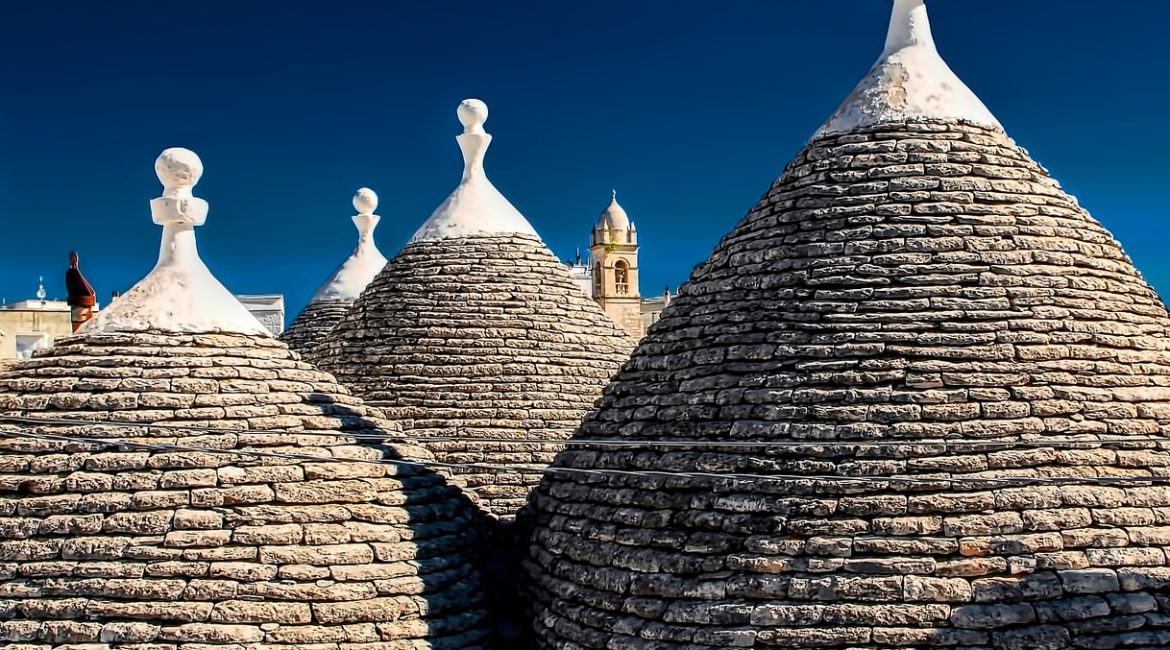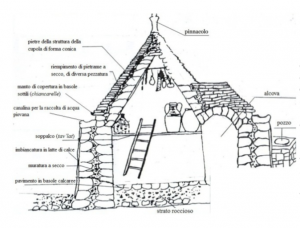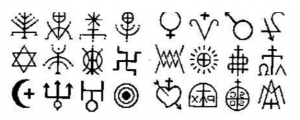
How Trulli are made
The term trullo seems to derive from the Greek Tholos (dome). This characteristic buildings were initially used as a shelter (for the local farmers, their animals and agricultural tools), converting over time into real homes.
In the oldest trulli, the conical vault rested directly on the ground, the walls of the casedda, a square-plan construction, began to be built at the rear.
Before starting construction, the cistern was built by digging directly into the rock, essential for collecting rainwater.
The material extracted from the subsoil would then be used to raise the walls, about one meter wide and composed of two rows of heavy limestone blocks. We then proceeded with the elevation of the dome from the typical conical shape, forming concentric circles (the internal stones are called chianche, the external ones chiancarelle) up to the tip, on which the pinnacle was placed.
The walls were then painted with white lime which, in addition to having a hygienic function, reflecting the sunlight, allowed in the warm months to maintain a pleasant internal temperature and, in winter, not to disperse the heat of the hearth.

The internal distribution of the rooms was very simple and rational: a large central hall, which corresponds to the main cone, and laterally spaces characterized by large arches, called “alcoves”, used mainly as bedrooms.
On the other side of the room was the hearth, which also served as a kitchen. The flooring of the rooms was made with stone slabs that are smoothed with use.
The pinnacles, now considered decorative elements, are believed to have originally had a magical significance attributable to the “betyl” cult, or cult of sacred stones, which derives from the solar cult. They can be of various shapes, placed or fixed on top of the dome.
In the oldest trulli, the pinnacle is a flat or roughly squared stone.

symbols painted on the cones of the trulli belong to the symbolism of the Christian religion of oriental derivation and represented a protective seal, capable of warding off evil spirits.


0 Comments